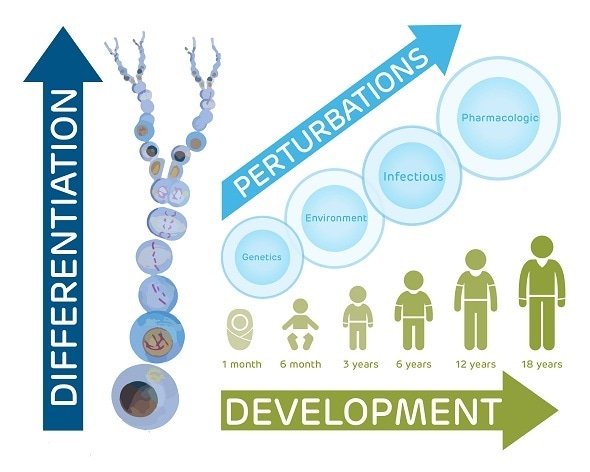Mar 29 2019
Research efforts to comprehensively map adult human cells are in progress. But in a Perspective publishing March 28 in the journal Developmental Cell, researchers argue that there is a need to map children’s cells with the same level of granularity. They make the case for the development of a Pediatric Cell Atlas (PCA), now underway, which will benchmark healthy and abnormal tissues in children at the level of single cells.

Pediatricians are familiar with the mantra that ‘children are not just small adults. Children’s diseases, symptoms, outcomes and therapies are often age-dependent, along with differences in physiology, presentation and drug responses compared to those occurring in adults. With this Atlas, we’ll have a standard reference tool showing, at different ages, which cells are doing the work for a child to grow healthily.”
First author Deanne Taylor, a researcher at Children’s Hospital of Philadelphia (CHOP) and the Perelman School of Medicine at the University of Pennsylvania
Most parents are familiar with growth charts, on which a pediatrician periodically logs a child’s height and weight in comparison to national averages. The PCA will compile age-matched trajectories of tissue and organ development in healthy children, referencing key data patterns in cell differentiation and cell signaling. Those trajectories will offer a standard for researchers to better understand when and how childhood illnesses diverge from those patterns, because of genetic influences, environmental factors or both.
Overall, support for pediatric research lags behind support for adult health research, with a corresponding lag in breakthrough biomedical discoveries and translation into clinical treatments for children. “For the large majority of healthy pediatric tissues, there exists little or no understanding of how cellular processes affect the course of development and maturation, or how pediatric cell populations contrast with those from adults,” writes Taylor.
But many lifelong chronic diseases, such as diabetes, asthma and neuropsychiatric conditions, first become apparent during childhood or adolescence, so designing or improving interventions during childhood could yield lifelong benefits.
Historically, researchers have extracted much cellular and genetic data from bulk tissue samples through measuring levels of active genes and proteins. The available bulk data measurements are low-resolution in their ability to capture the diversity of cell types, cell tasks and cell stages. “We can’t assume that all the cells in one tissue, or even one section of a tissue, are doing the same jobs,” said Taylor. “Some cell types, such as stem cells, may be present in very low numbers, but may be performing key tasks. Cells may also perform different tasks at different stages, but these details may be lost in the noise from bulk data.”
Single-cell analyses, in contrast, separate tissues into individual cells, and analyze each cell’s molecular signature. Technologies that have become available over the past few years combine next-generation sequencing and massively parallel processing, such as RNA sequencing, of single cells. Single-cell studies, says Taylor, open up a high-definition view of cell physiology and functioning that will expand scientific knowledge of health and disease—particularly during the dynamic childhood period, when growth and development are under way.
The PCA will be part of a broader international consortium, the Human Cell Atlas (HCA) and will share data among members and with other researchers worldwide. It will also store data in the HCA’s repository, says Taylor, with associated biobanking and data repositories in different centers available to biological researchers. As the PCA moves forward, it will develop its overall organization, data systems and multiple projects, including pilot studies of specific organs and disease areas, such as childhood cancers.
Ultimately, researchers would leverage knowledge from single-cell data into a deeper understanding of organ development and function, to better inform precision treatments to advance children’s health.”
Deanne Taylor